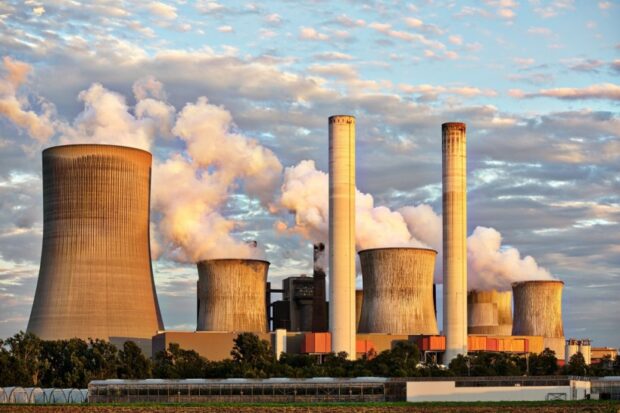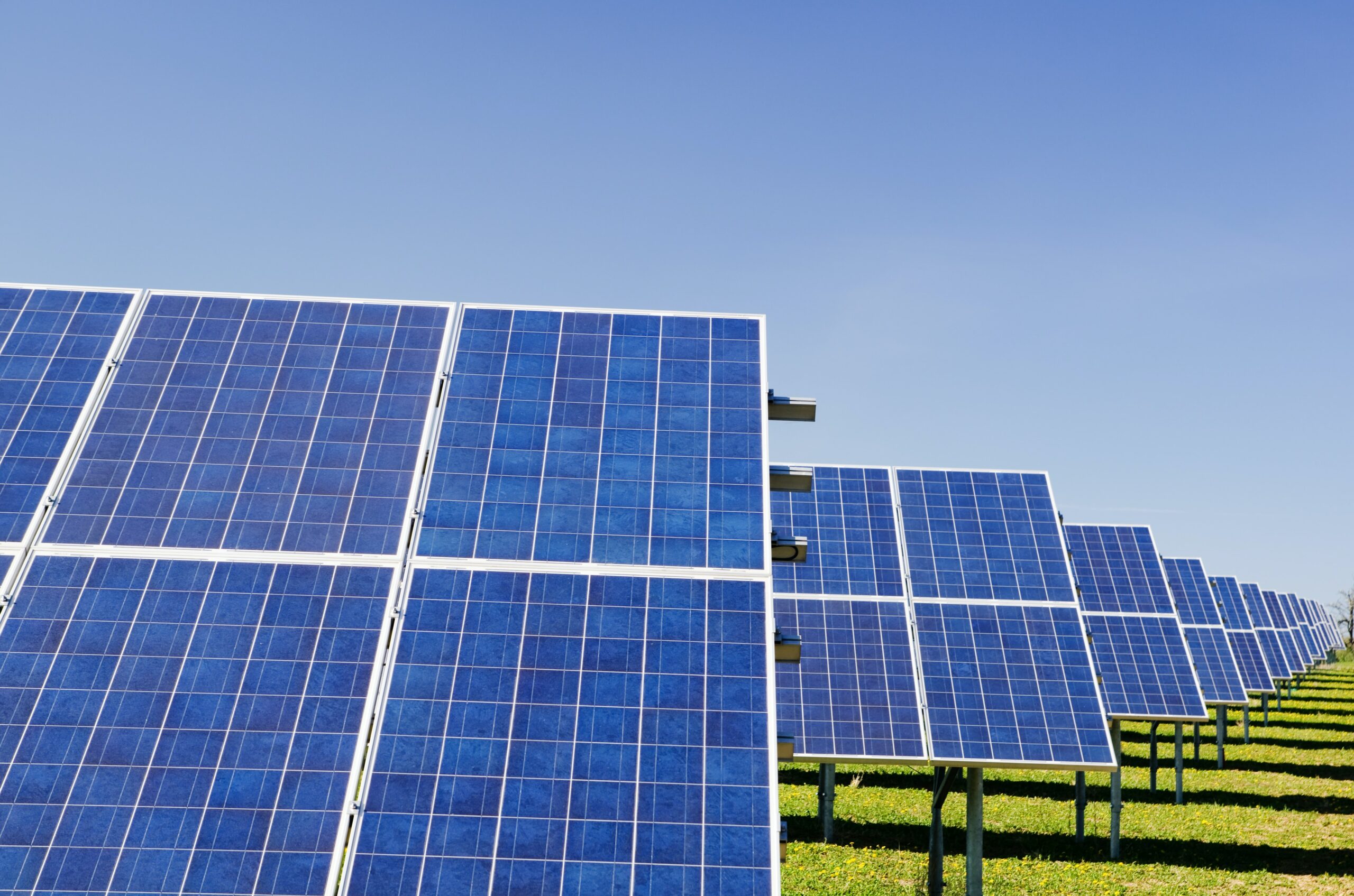How climate finance can help boost South Africa’s economy
South Africa is at the centre of one of the world’s most significant climate finance agreements. In November 2021, South Africa joined with the UK, Germany, France, the USA and the European Union to form the Just Energy Transition Partnership (JETP). As part of the agreement, the country received USD $8.5 billion (R131 billion) in climate finance. President Ramaphosa described it as a “watershed moment”.
Members of the partnership, created at the COP26 climate conference, worked together to create the Political Declaration on the Just Energy Transition in South Africa. They all signed this commitment to move away from fossil fuels to greener energy sources for a low carbon future. The declaration, and the climate finance pledge that came with it, made headlines worldwide.
However, one year later in November 2022, President Ramaphosa stated that South Africa would require a lot more money to fully fund the transition.
Why the JETP is different

When the JETP partnership and associated climate finance package were created, South Africa’s climate change chief negotiator, Maesela Kekana, described them as “groundbreaking”. They represent a complete change from the old model, in which wealthier nations impose a plan on developing countries.
South Africa’s involvement in designing the plan makes it much more likely to succeed because it takes current political and economic realities into account. Kekana said: “There’s nothing like this out there. It’s never been done before. We are determined to make this work because we believe that this is a good model.”
President Ramaphosa described the Political Declaration as “a first-of-its-kind partnership to turn these commitments into reality, and a model for similar forms of collaboration globally.” Others have called the package “a new model for climate progress” and suggested that other countries should follow South Africa’s example.
Since signing the Declaration, South Africa has taken many encouraging steps. These include creating a Just Transition Framework to set out the actions that its government will take to move away from coal. The framework, adopted in May 2022, emphasises the need to minimise the impact of the transition on the most vulnerable.
Climate finance: Supporting the just transition
The idea of a just transition is important because the fight against climate change should be a fight to give everybody a better future – not just those who are already privileged. The concept originated with the trade union movement in the 1970s, working together with environmental justice groups. They wanted to see a move away from polluting and harmful industries. But, they also wanted to protect workers in those industries and stop them from falling into poverty. This requires an active effort to make the transition work for everyone and funding to back it up.
South Africa’s Just Transition Framework defines a just transition as one that “contributes to the goals of decent work for all, social inclusion, and the eradication of poverty.” This has to happen within the context of achieving net zero greenhouse gas emissions by 2050. Developing resilience to the effects of climate change is another key element. A just transition should also centre South Africa’s people in decision-making, particularly those who are already disadvantaged.
The coal sector is probably the earliest to face disruption from South Africa’s move towards a low-emissions economy. Decarbonising means achieving a sharp decline in coal consumption and production. This will cause job losses across the coal value chain and affect other jobs in communities centred around coal mining. The Just Transition Framework document warns that without economic diversification, this could create “ghost towns”. Climate finance can help to offset these job losses by creating new ones. In South Africa, it is also intended to provide social protection measures, such as temporary income support.
The Green Climate Fund
Another significant source of climate finance for South Africa is the Green Climate Fund (GCF) – the world’s largest climate fund. It was formed to support the 2015 Paris Agreement by funding countries’ efforts to cut their emissions. The focus of the Green Climate Fund is “transformation”: significant and permanent changes on the path to net zero.
The decision-makers of the Green Climate Fund have been working alongside South African ministers to decide exactly which projects should receive funding. In 2019, the Green Climate Fund signed an agreement with the Development Bank of Southern Africa to offer credit support to renewable energy projects. This lowers the risk to private investors of supporting renewable energy projects, making them a more attractive investment proposition. This means the government does not have to step in to guarantee such projects.
Ambitious plans
In October 2022, it was reported that South Africa had submitted an ambitious plan for the country’s transition to renewable energy. In November 2022, days before the COP27 climate conference began, President Ramaphosa announced that the country will need a lot more money to achieve this. He stated that South Africa will need R1.5 trillion, or USD $84 billion, of climate finance to decarbonise the economy. This is nearly ten times the sum that the JETP originally pledged in November 2021.
The full details of the plan are not publicly available. But, news reports say that it allocates roughly R1 trillion to electricity financing, R128 billion to new energy vehicles and R319 billion to green hydrogen. The focus on new electricity sources is key for the net zero ambitions of a country that still relies on coal for more than 80 per cent of its electricity generation. It is also an opportunity to create new jobs in the renewable energy sector. These can help to offset those lost in the coal industry.
In November 2022, the Finance Minister and Public Enterprises Minister met with the President of the World Bank to finalise R9 billion of funding for converting the Komati coal-fired power plant into a renewable power station. It is the first major coal power station to convert to renewables. As such, it could provide a model for transitioning energy sources in the future.
Opportunities for innovation

The power sector’s shift to renewables is the most obvious example of how climate finance can create new green jobs, but there are many others. Many sectors can adapt to a greener future by changing the way they work. South Africa’s car manufacturing industry is one. The auto industry needs to pivot to electric vehicles in the near future, and climate finance can provide the investment needed for new equipment and reskilling the workforce.
It can also support greener innovations in farming, such as the use of data-gathering to reduce the use of fertilisers and pesticides.
Climate finance may also support the development of new industries, such as green hydrogen. South Africa has the potential to become a key global source of the green fuel. It is one of several African countries, along with Namibia and Kenya, to explore hydrogen as an option. To do so requires investment in new infrastructure, which climate finance can support.
Helping developing countries to ditch coal
One of the many firsts for South Africa’s original climate finance package was the involvement of a new green fund called Accelerating Coal Transition (ACT). This is the first international fund dedicated to helping developing countries move away from coal. It was launched by Climate Investment Funds in 2021, and they managed to secure USD $2 billion in total funds. South Africa is receiving USD $500 million (R8.8 billion) from this. The other early beneficiaries of the scheme are Indonesia, India and the Philippines. Between them, the four countries make up 15 per cent of global emissions from coal.
Setting aside its impact on the climate, the economic reality is that coal is already on the way out. A 2018 study found that two-fifths of the world’s coal-fired power stations were already running at a loss. The Carbon Tracker website estimates that by 2030, 96 per cent of coal generation capacity will cost more to run than building new renewables. So, coal-dependent countries will eventually have to transition to different energy sources anyway. But, without climate finance, this could happen so slowly that it undermines the climate targets in the Paris Agreement. It is also unlikely to happen in a way beneficial to people or the economy. When Coal India announced a long-term plan to scale back industry jobs, there was no mention of any plan to help the laid-off workers.
Climate finance helps developing countries move away from coal more quickly. It also supports a transition that will financially support former coal workers and create new opportunities. South Africa now has the opportunity to be a global leader in the energy transition. It can set an example for developing countries to follow.

Climate change: The ultimate driver
Climate finance has many economic benefits, but its ultimate purpose is to slow the rate of climate change. The ultimate reason for helping countries move away from producing and burning coal is the fact that coal combustion is the biggest single source of global temperature increases.
South Africa is the biggest emitter of greenhouse gases on the African continent. It emits more carbon dioxide than the second and third-highest-emitting countries, Egypt and Algeria, put together. Globally, it is a bigger-than-average contributor to climate change.
South Africa is also vulnerable to the potential effects of climate change. At 2°C of warming, South Africa has a medium or high exposure to many negative effects of climate change, from water scarcity to public health issues.
If the world can stay below 1.5°C, this will significantly change the picture for South Africa, reducing high risks to medium and medium risks to low. Therefore, it is important for South Africa to reduce its emissions to even lower than what it has pledged. Its Nationally Determined Contribution limits emissions to below 631 tonnes of carbon dioxide equivalent (MtCO2e) by 2030. But, this is not in line with a 1.5°C warming pathway. To achieve that, South Africa needs to get emissions below 348 MtCO2e by 2030. Emissions cuts on this scale require significant changes to many industries and our way of life. But, climate finance can ensure that these changes are less disruptive and often beneficial.
The hidden benefits of climate finance
In the long term, South Africa will need further climate finance to continue transitioning its energy system. A 2022 study from the Blended Finance Taskforce and the Centre for Sustainability Transitions at Stellenbosch University estimated that South Africa will require at least USD $250 billion (R4.4 trillion) over the next three decades.
But the costs of not transitioning are likely to be even greater. These include the costs of adapting to a world where warming has reached 2°C or higher. This means planning for more extreme weather events, such as flooding and heatwaves. It means rising food prices and possible food shortages. Furthermore, it means extra costs in many other areas that require public spending, such as healthcare and transport infrastructure.
Healthcare systems would also continue to bear the hidden costs of coal pollution. A research document leaked in 2021 found that poor air quality in coal-producing areas is killing over 5,000 South Africans every year.
A South Africa with no green transition plan would also be stuck with load shedding for the foreseeable future. Without new renewables to replace the ageing network of coal-fired power stations, capacity within the electricity system would be even lower. Climate finance can fund a shift to renewables, making load-shedding a thing of the past. As well as keeping the lights on, a greener power system will literally save lives. The sum of money the country requires may seem large, but it is small compared to the sizeable benefits that climate finance can bring.
Related Articles
Evidence mounts on the massive economic risks of fossil fuels
A new report warns of trillions in oil and gas revenues at risk by 2040, with demand set to fall globally in favour of cheaper renewables.
Renewables could safeguard trillions from oil and gas price shock, finds new report
Accelerating renewables in line with the 1.5°C pathway would safeguard global GDP, inflation and jobs in the event of an oil and gas price shock.




